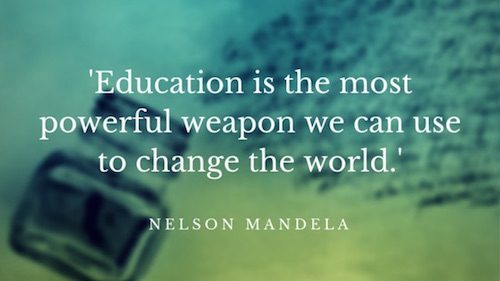After finishing the Discovering Mathematics module, I have decided to take some time to reflect upon my experiences within the module.
At the start of the module, and before it even began, my attitude towards mathematics was extremely negative. I feel this is because maths was always a subject which I struggled with at school, especially higher maths, as to do well I had to work extremely hard and put a lot of effort in. As much as I was relatively good at maths, it was not something which I enjoyed at school. I think this is mainly because the way in which I was taught mathematics, was extremely procedural. Furthermore, the teachers would make out that there was only one way to answer a question, and if you did not understand this, then you were wrong. This contradicts what Liping Ma (2010) says, as she states that teachers who have a profound understanding of fundamental mathematics should realise that not all children teach the same, and that teachers should encourage that there are different ways to solve the same question.
Before taking Discovering Mathematics, I have never experienced enjoyment in conjunction with maths. However, this module has taught me that mathematics can be FUN. Multiple lectures throughout the course of the semester have included task, or topics which I have thoroughly enjoyed. For example, one of my favourite inputs was learning about the connection mathematics has within sports. I then went on to look at maths in golf, a sport which I played for years when I was younger, and I found this extremely interesting. Moreover, another input which I also enjoyed was about whether animals can count. Prior to this input, I had never thought about this, but after studying it I have realised that animals can count. It was interesting to consider different animals like ants, horses and chimpanzees, and understand how they can all count in their own individual ways.
Finally, I feel that the Discovering Mathematics module has improved confidence in maths. Prior to this module, I was worried that when I came to teaching maths in the future, that the children would identify my lack of enthusiasm and confidence in the subject and that this would impact their experience of mathematics. However, I can now say that my confidence in mathematics, has improved and that I know this will have a positive impact on not only my teaching, but also the children’s mathematical education. Additionally, due to studying Liping Ma’s (2010) profound understanding of fundamental mathematics (PUFM), I have come to understand some of the key qualities that a successful mathematics teacher must have. I will also take some of the activities and tasks which we have done in the module, such as the Apprentice task, and include these in my future teaching profession, as I believe that children would enjoy these and see the fun and relevance of mathematics within the wider society and in their own lives.
References
Ma, L. (2010). Knowing and teaching elementary mathematics. Milton Park, Abingdon, Oxon: Routledge, pp.120-141.


 ething which parents can get involved in. However, parents who are afraid of maths or dislike it, will pass this onto their children (Furner & Duffy, 2002). Therefore, it is important that when parents are encouraging maths in the home, that they promote positive mathematical experiences. Susan Isaacs, alongside Friedrich Froebel, has valued the importance of parents as educators. Parents of preschool children especially, are essential in their child’s early development (Pound, 2003). It is important for parents to encourage play based learning in their home as this will help to develop the learning of the child. Parents can be involved with helping children have fun with simple mathematical concepts such as numbers, shapes and measure. It is crucial however, to have a balance between child initiated play and adult initiated play. It is important to ensure that children are regularly at the forefront of their learning, as this is when the child will learn best. This can easily be done by allowing the children to create their own rules or their own games.
ething which parents can get involved in. However, parents who are afraid of maths or dislike it, will pass this onto their children (Furner & Duffy, 2002). Therefore, it is important that when parents are encouraging maths in the home, that they promote positive mathematical experiences. Susan Isaacs, alongside Friedrich Froebel, has valued the importance of parents as educators. Parents of preschool children especially, are essential in their child’s early development (Pound, 2003). It is important for parents to encourage play based learning in their home as this will help to develop the learning of the child. Parents can be involved with helping children have fun with simple mathematical concepts such as numbers, shapes and measure. It is crucial however, to have a balance between child initiated play and adult initiated play. It is important to ensure that children are regularly at the forefront of their learning, as this is when the child will learn best. This can easily be done by allowing the children to create their own rules or their own games. chance to do whilst I was learning maths in school. I did not have much time to create my own piece of art work, so mines is pretty basic. However, I can definitely see myself looking into either Islamic art, or something similar in the future, whether it be for my own benefit or with a future class. I have attached my own piece of Islamic art.
chance to do whilst I was learning maths in school. I did not have much time to create my own piece of art work, so mines is pretty basic. However, I can definitely see myself looking into either Islamic art, or something similar in the future, whether it be for my own benefit or with a future class. I have attached my own piece of Islamic art.